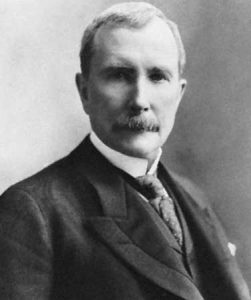
In our world today, specifically if you reside in the United States, oil is a huge part of our lives. And I am not simply speaking about the gas that you put in your car, but also the oil that warms your home, the plastic that enters into your water bottles and credit cards, as well as the cleaner that your dry cleaner usages to clean your preferred fit.

With a lot of our lives based on the rate of petroleum, any astute financier needs to understand the effective connection in between oil and their portfolio and look for to understand how we got where we are today. Specifically for Forex traders who concentrate on the value of the dollar relative to other currencies, you need to know how the oil market ended up being the “Big Oil” that we understand today.
Rockefeller and the Standard Oil Company

In 1870 John D. Rockefeller established the very first Standard Oil Company in Ohio, which was the start of a brand-new extremely regulated business animal that would ultimately become the oil market that we understand today. For over 35 years, Standard controlled the oil market in real robber-baron design, managing state and federal government by having more money than they did and dispensing allurements that were undue to decline.
Various businesses were formed such as Standard Oil of New York and New Jersey, but they were all managed by the single callous parent company. In 1906, chief law officer Frank Kellogg began a case versus Standard Oil which took control of 5 years to conclude, but in 1911 it was ruled that Standard Oil was a monopoly which needed to be burglarized smaller sized business.
Now do you acknowledge the names Chevron, Mobil, and Exxon? Exxon used to be called Standard Oil of New Jersey, Chevron used to be called Standard Oil of California, and Mobil was Standard Oil of New York. This is how the oil market ended up being “Big Oil,” as well as after the breakup of his company Rockefeller still managed 25% managing stake in each company.
Oil Prices and Exchange Rates
The significant currency sets that most forex traders concentrate on have the US dollar as either the base or counter currency, so any trader that understands the value of the dollar can earn money by either purchasing or offering the dollar versus other currencies. A boost in the rate of petroleum does not simply impact the wallet of the typical American resident, but since the US is mainly an oil-importing nation a boost in oil rates can have an inverted result on the value of the dollar, implying that an earnings chance develops to offer the dollar versus other significant currencies.
